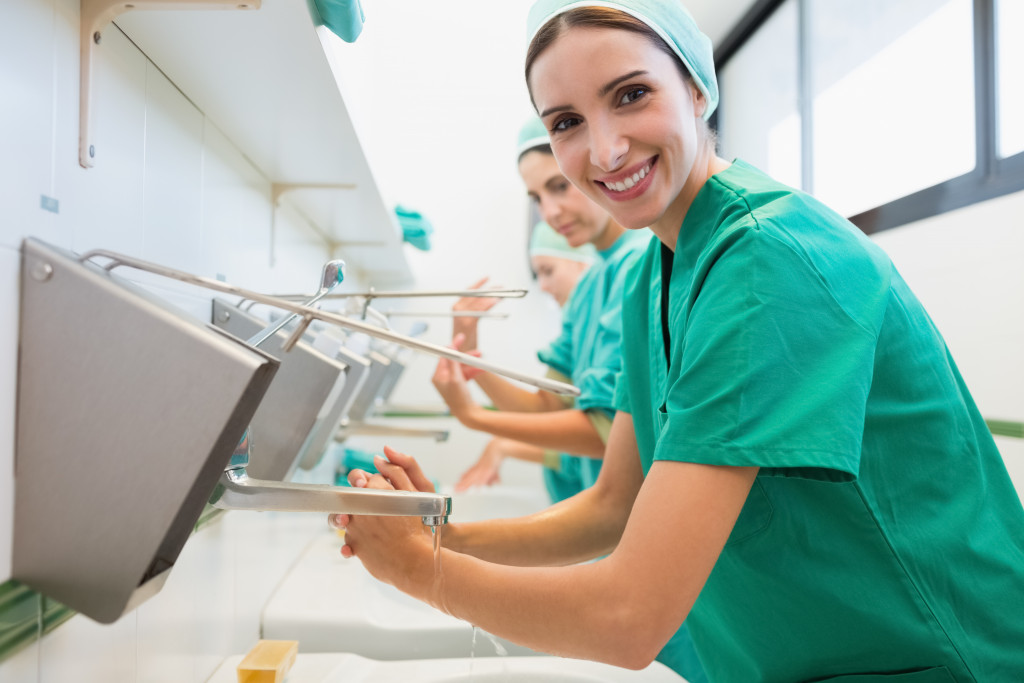- Establish protocols and train staff on proper infection control and prevention.
- Utilize technology, such as UV disinfection systems, to reduce the risk of infections.
- Maintain a clean environment through comprehensive cleaning programs.
- Practice proper hand hygiene techniques consistently.
- Focus on prevention rather than finding cures for existing infections.
One of the biggest concerns in healthcare facilities is infection control. Patients come seeking relief and healing, but unfortunately, they may end up contracting more diseases inside the facility instead of getting better. Healthcare facilities are constantly challenged to prevent infection outbreaks, control potential risks, and provide the right environment for patients to heal.
The importance of a clean and hygienic environment has become ever more apparent with the outbreak of Covid-19. This article will discuss how healthcare facilities can provide and maintain a clean and safe patient environment.
Establish Protocols and Train Staff
One of the keys to preventing infections is establishing a set of protocols that all staff members must adhere to. These protocols should include a cleaning schedule and a list of cleaning and disinfecting materials that are safe to use. All healthcare professionals must be aware of the protocols and be able to implement them.
They should also be aware of the risks of not following the protocols and the consequences of infections within a healthcare facility. Establishing protocols and training staff on infection control measures can improve patient care and outcomes.
Use of Technology
With the rise of technology, healthcare facilities are now able to provide patients with safe and hygienic environments. One innovative solution is the use of UV disinfection technology in hospitals.
UV disinfection systems effectively eliminate harmful microorganisms that commonly inhabit hospital rooms, such as bacteria and viruses. This technology has become increasingly popular due to its high efficiency and low maintenance costs, making it a viable solution for healthcare facilities.
Maintain a Clean Environment

A clean surrounding is necessary for healthcare facilities for patients to avoid infections. Maintaining a high hygiene standard in patient rooms, surgical suites, and common areas is essential.
Healthcare facilities must have a comprehensive cleaning program that includes procedures for cleaning surfaces, floors, carpets, and furniture. It’s also essential to clean and disinfect medical equipment regularly. Having a cleanliness program in place can support a healthy and safe environment for both patients and staff.
Proper Hand Hygiene Practices
Hand hygiene is a crucial aspect of healthcare and an essential practice for healthcare workers to prevent infections from spreading. Healthcare workers have a moral and ethical responsibility to practice good hand hygiene techniques consistently.
Wash your hands regularly
Healthcare workers should wash their hands regularly to prevent infections from spreading. Washing hands regularly is a simple but effective way of staying healthy. Use soap and water and scrub your hands for at least 20 seconds. Remember to wash your hands before and after handling patients, after using the restroom, and before and after handling any equipment.
Use alcohol-based hand sanitizer

Alcohol-based hand sanitizers are an alternative to washing hands with soap and water. They can kill microorganisms on the skin when soap and water aren’t available and are effective. Make sure to use a hand sanitizer that contains at least 60% alcohol. It should be alcohol-based.
Wear gloves
Gloves provide a barrier between healthcare workers and patients to prevent spreading of infections. However, wearing gloves does not replace the need for hand hygiene. Healthcare workers need to wash their hands before and after wearing gloves. Gloves should be removed and disposed of correctly after use to prevent the spread of infections.
Avoid touching your face
Healthcare workers should avoid touching their faces as much as possible. Touching the face can transfer microorganisms from the hands to the mouth, nose, and eyes, leading to infection. Healthcare workers should also avoid wearing jewelry, such as rings and bracelets, which can harbor microorganisms and be a source of infection.
Prevention is Better Than Cure
Lastly, it would help if you focused on prevention rather than finding a cure for existing infections. Healthcare facilities can adopt various measures to prevent the spread of diseases, such as providing protective equipment for staff and patients, ensuring all shared surfaces and equipment are clean and disinfected, encouraging vaccination when appropriate, and avoiding conveying equipment. These practices will minimize the chances of acquiring and spreading infections within the facility.
The Bottom Line
A clean and hygienic environment in healthcare facilities cannot be underestimated. By establishing protocols, training staff, utilizing technology, maintaining cleanliness, practicing proper hand hygiene, and focusing on prevention, healthcare facilities can reduce the risk of infections and promote their patients’ overall health and well-being.
Healthcare facilities should prioritize infection control measures to manage better and fight against potential outbreaks.



